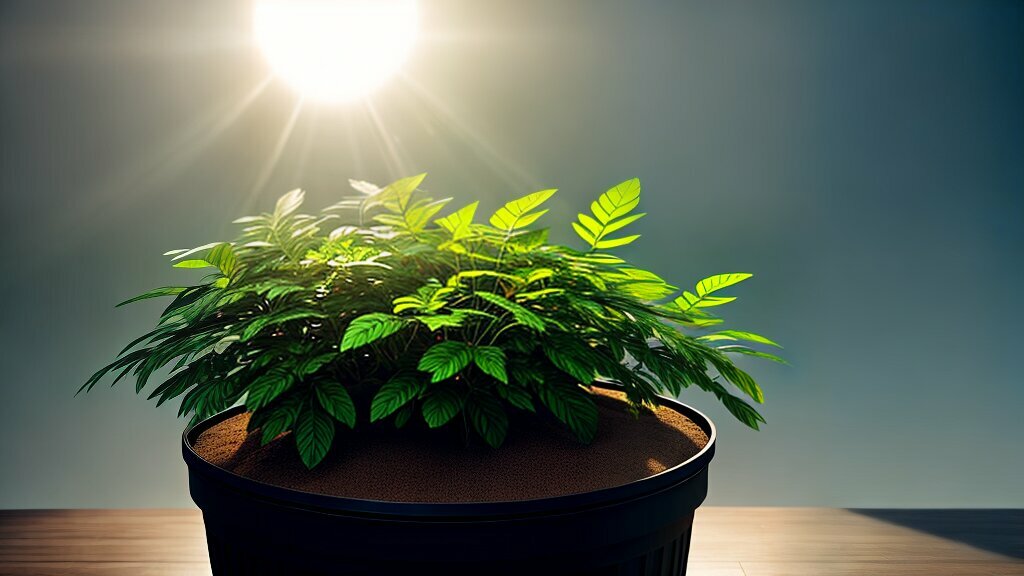If you’re new to gardening, you might be wondering if your grow bags need drainage holes. The short answer is yes, they do. Proper drainage is critical for the health of your plants. Without adequate drainage, your plants can suffer from root rot, waterlogging, and other problems that can stunt their growth or even kill them.
Continue reading to learn more about the importance of drainage holes in grow bags and the benefits they provide for your plants.
Key Takeaways:
- Drainage holes are essential for grow bags to prevent overwatering and ensure proper aeration for plant roots.
- Not all grow bags require drainage holes, but most do.
- The benefits of drainage holes include promoting healthy root development, preventing waterlogging, and reducing the risk of root diseases.
The Significance of Drainage in Grow Bags
When it comes to growing plants in containers, drainage is an essential factor for healthy plant growth. The same is true for grow bags. Without proper drainage, the roots of your plants can become waterlogged, leading to root rot, stunted growth, and even plant death.
Grow bags are a popular option for container gardening. They are made of breathable fabric, which allows for better aeration and air circulation around the roots than traditional plastic containers. However, this breathability can also lead to excess water draining out of the container too quickly, especially if there are no drainage holes.
| The Benefits of Drainage in Grow Bags |
|---|
| Prevents overwatering: Drainage holes in grow bags allow excess water to drain out of the container, preventing the roots from becoming waterlogged. This helps to prevent overwatering and ensures that the plant roots have the right moisture levels for healthy growth. |
| Ensures proper aeration: Drainage holes also allow for proper aeration of the soil in grow bags. When water drains out, it creates space for air to move in, providing essential oxygen to the roots. This helps the roots to breathe and absorb nutrients, leading to healthy plant growth. |
How Drainage Holes Prevent Waterlogging
When there are no drainage holes in grow bags, excess water can accumulate in the bottom of the container, leading to waterlogging. This can cause the roots to suffocate and lead to root rot. Drainage holes allow excess water to drain out of the container, preventing waterlogging and ensuring that the roots have the right moisture levels for healthy growth.
It is important to ensure that the drainage holes are the right size. Large holes can lead to too much water draining out too quickly, while small holes can cause water to pool in the bottom of the container. A good rule of thumb is to have several small drainage holes evenly spaced around the bottom of the container.
Overall, proper drainage is essential for grow bags to ensure healthy plant growth. The benefits of drainage holes include preventing overwatering, ensuring proper aeration of the soil, and preventing waterlogging. Adding drainage holes to your grow bags is a simple yet effective way to promote healthy plant growth.
Do All Grow Bags Require Drainage?
If you’re new to gardening with grow bags, you might be wondering if every type requires drainage holes. The short answer is yes. All grow bags need proper drainage for healthy plant growth.
However, there are a few exceptions to this rule. Some manufacturers design grow bags with built-in drainage systems, such as wicking beds or self-watering containers. In these cases, adding drainage holes could interfere with the watering system and may not be necessary.
Additionally, certain plants have different water requirements and may need more or less soil moisture. For example, succulents and cacti prefer well-drained soil, while water-loving plants like tomatoes and lettuce need more moisture. Adjust the drainage needs by selecting the appropriate soil mix and adjusting the size and number of drainage holes.
The Benefits of Drainage Holes in Grow Bags
If you’re wondering why drainage holes are important in grow bags, let’s take a closer look at the benefits.
Promotes Healthy Root Development
Proper drainage helps prevent water from accumulating at the bottom of grow bags, which can lead to the roots sitting in a pool of stagnant water. This can cause the roots to rot and prevent them from getting the oxygen they need to thrive. When there are drainage holes in the grow bags, excess water can drain out, promoting healthy root growth and preventing root diseases.
Prevents Waterlogging
Without drainage holes, grow bags can retain too much moisture, making it difficult for the roots to absorb the water they need. This can lead to waterlogging, which can stunt plant growth, reduce yield, and cause other problems. Drainage holes allow excess water to escape, preventing waterlogging and ensuring that the soil remains moist but not waterlogged.
Reduces the Risk of Root Diseases
When roots sit in water for prolonged periods, they can become more susceptible to diseases caused by fungi and bacteria. By allowing water to drain out of grow bags, you can reduce the risk of root diseases and ensure that your plants stay healthy.
By providing proper drainage, you can create a healthy environment for your plants to thrive, resulting in bountiful harvests.

Achieving Optimal Drainage for Grow Bags
Proper drainage is key to keeping your plants healthy and happy. Here are some tips for achieving optimal drainage in your grow bags:
- Choose the right soil mix: A well-draining soil mix is crucial. Avoid using heavy soils that retain moisture and suffocate roots. Instead, opt for a mix that contains perlite or vermiculite to aid in drainage.
- Select the appropriate size of drainage holes: The size of your drainage holes will depend on the type of plants you’re growing and the size of your grow bag. Generally, a hole with a diameter of 1/4 to 1/2 inch should suffice.
- Use a saucer: Place your grow bag in a saucer to catch any excess water that drains out. This prevents water from pooling around the roots and causing waterlogging.
- Water correctly: Overwatering can be just as detrimental to your plants as underwatering. Water your plants only when the soil is dry to the touch, and make sure the water is evenly distributed throughout the bag.
Following these tips will ensure that your plants have the right amount of moisture and oxygen for healthy growth. Remember, proper drainage is just as important as proper watering!

How to Add Drainage Holes in Grow Bags
Adding drainage holes to your grow bags is a simple process that will significantly improve the health of your plants. Here’s how:
- Choose the Right Location: Look for the bottom of your grow bag and select a spot halfway between the center and the edge. Avoid making holes too close to the edge, as it may compromise the integrity of the bag.
- Prepare Your Tools: You will need a sharp pair of scissors or a knife and a marker for this task. You may also want to place a cutting board underneath the grow bag to protect your work surface.
- Mark Your Spot: Use the marker to draw a small circle where you want your drainage hole to be. Be careful not to make it too large, as this may lead to excessive drainage.
- Make the Cut: Take your scissors or knife and cut along the circle you have drawn. Use a gentle sawing motion to avoid tearing the fabric, and make sure the cut is clean and even.
- Repeat the Process: Depending on the size of your grow bag, you may want to make several drainage holes. Repeat steps 2-4 for each additional hole.
- Test Your Drainage: Fill your grow bag with soil and water until it drains out of the holes. If the water doesn’t drain quickly enough, you may need to make the holes slightly larger or add more of them.
By following these simple steps, you can ensure that your plants get the adequate drainage they need to thrive. Remember to check your grow bags regularly to make sure the drainage holes are clear and free of debris. Happy growing!

Addressing Drainage Requirements for Grow Bags
When it comes to drainage requirements for grow bags, it’s important to consider the type of plants you’re growing. Different plants have different water requirements, which can affect their drainage needs.
For example, plants that prefer dry soil, like cacti, may not require as much drainage as plants that prefer moist soil, like ferns. If you’re unsure about your specific plant’s water needs, do some research to determine its requirements.
In general, it’s a good rule of thumb to ensure that your grow bags have adequate drainage. This will help prevent waterlogging, which can lead to root diseases and stunted growth. If you find that your plants are not thriving, check to make sure that they are getting enough drainage.
One way to adjust the drainage in your grow bags is to vary the size of the drainage holes. Larger holes will allow for more drainage, while smaller holes will retain more moisture. You can also use different soil mixes to adjust the drainage. For example, adding sand or perlite to the soil can help increase drainage.
Finally, it’s important to keep an eye on your plants and adjust their drainage as needed. If you notice that your plants are not thriving, check to make sure that they are getting enough drainage. You may need to experiment with different drainage methods and soil mixes until you find the right balance for your plants.

Conclusion
Congratulations! You’re now equipped with the knowledge to ensure proper drainage in your grow bags. Remember, drainage holes are essential for preventing overwatering and promoting healthy root development. By selecting the right soil mix, creating appropriate sized drainage holes, and practicing proper watering techniques, you’ll create the optimal environment for your plants to thrive.
Always remember to be mindful of the specific drainage requirements for the plants you’re growing. With these tips and techniques, you’ll be well on your way to producing a flourishing garden or crop. Happy growing!






